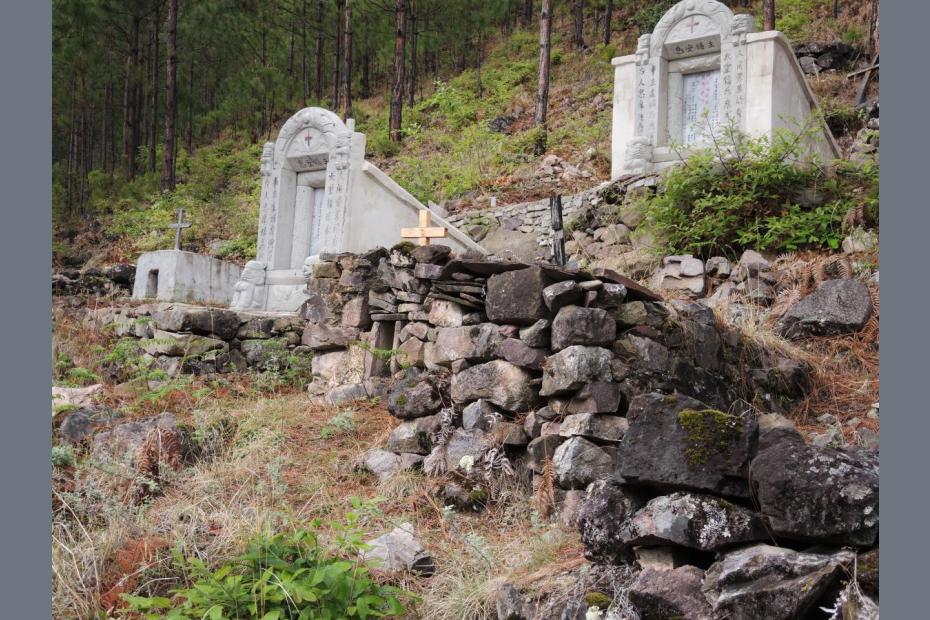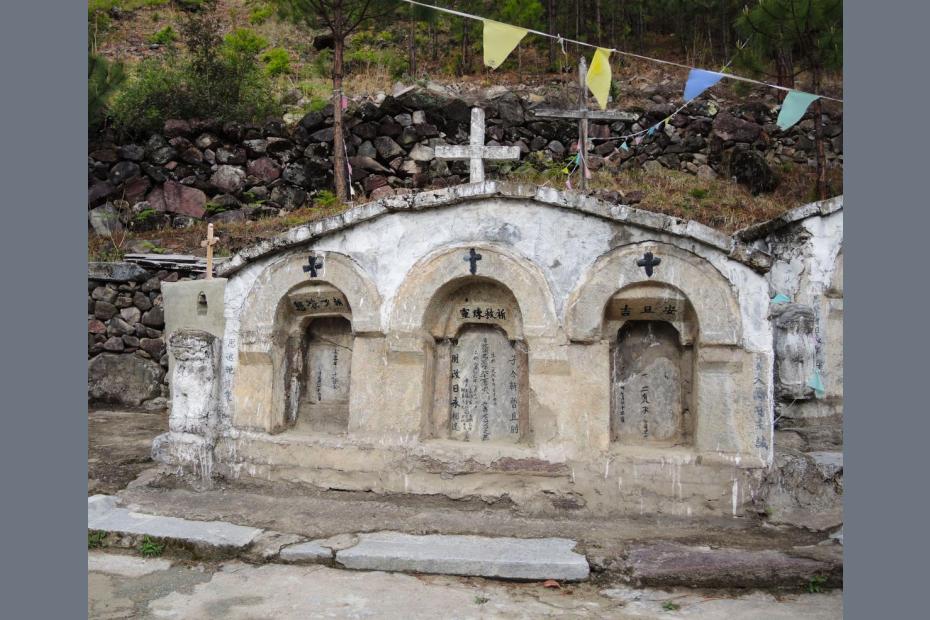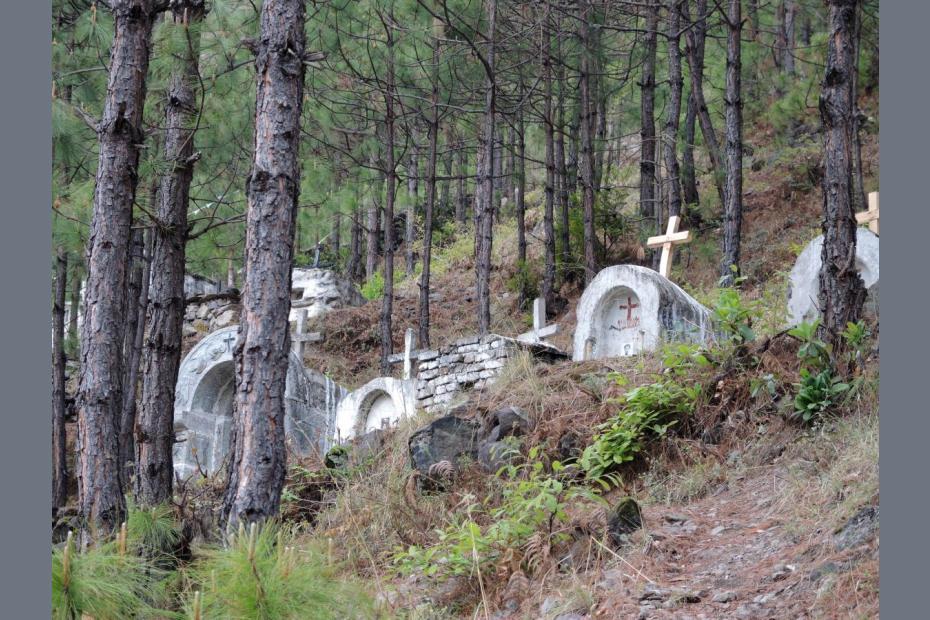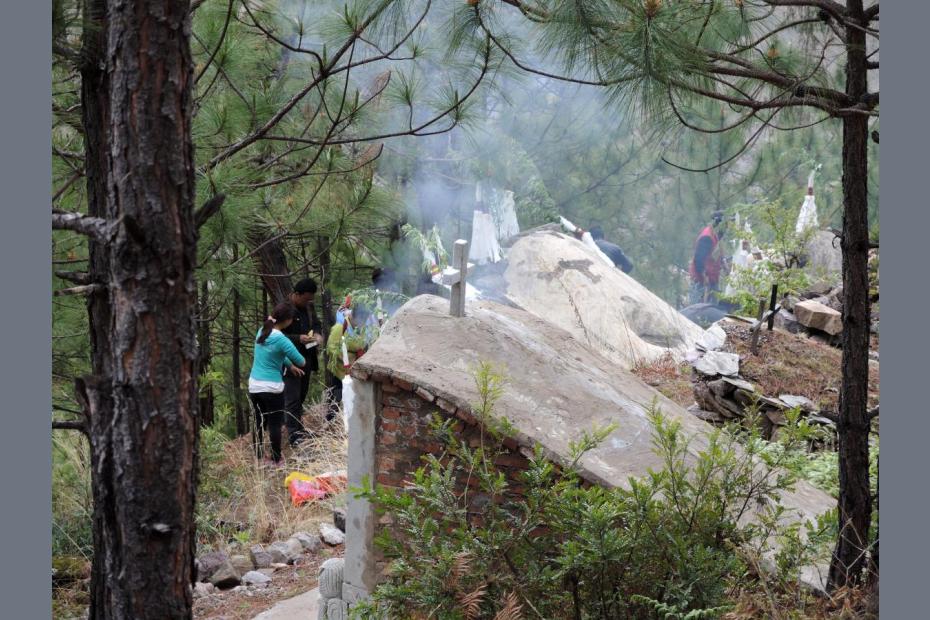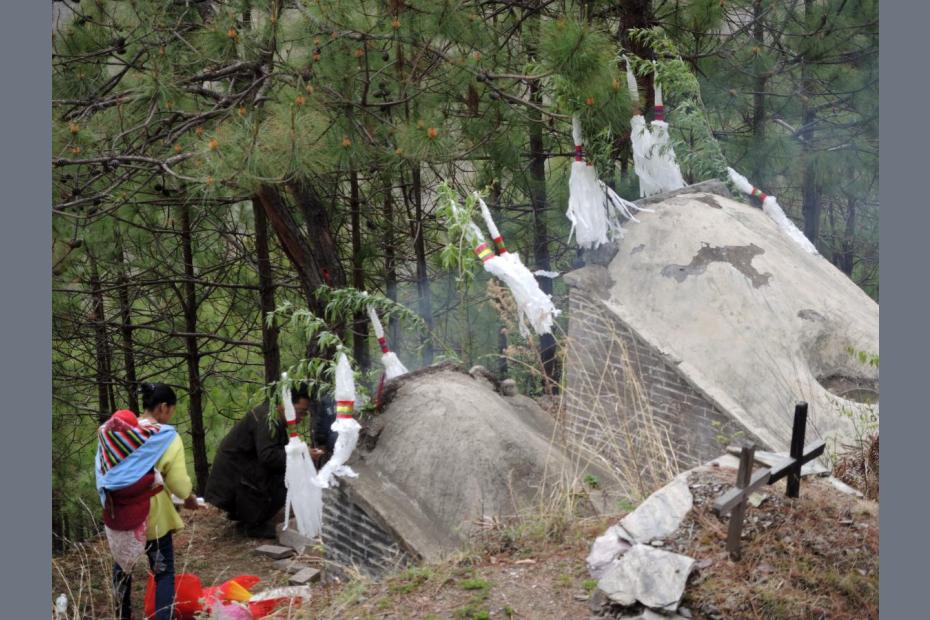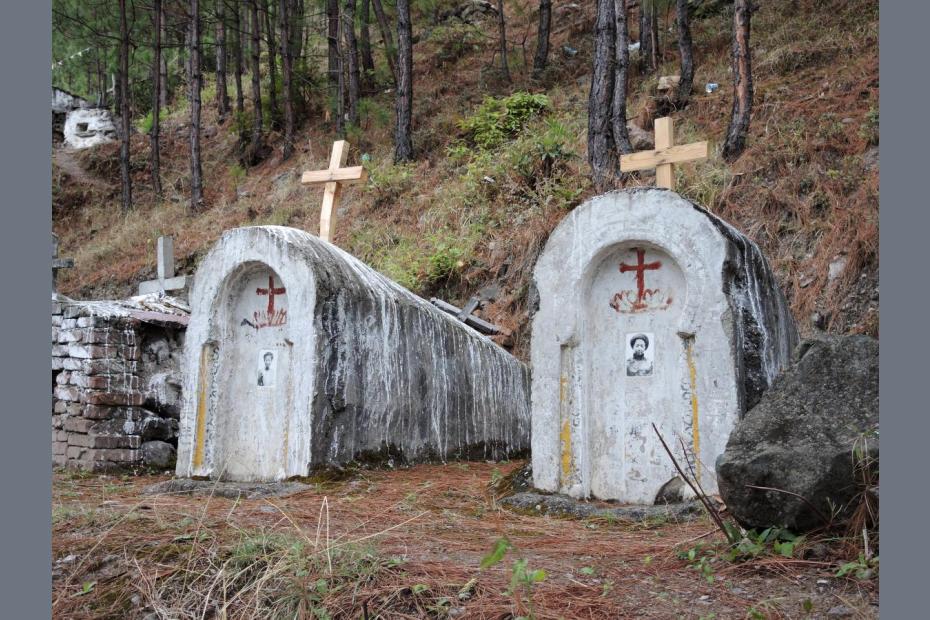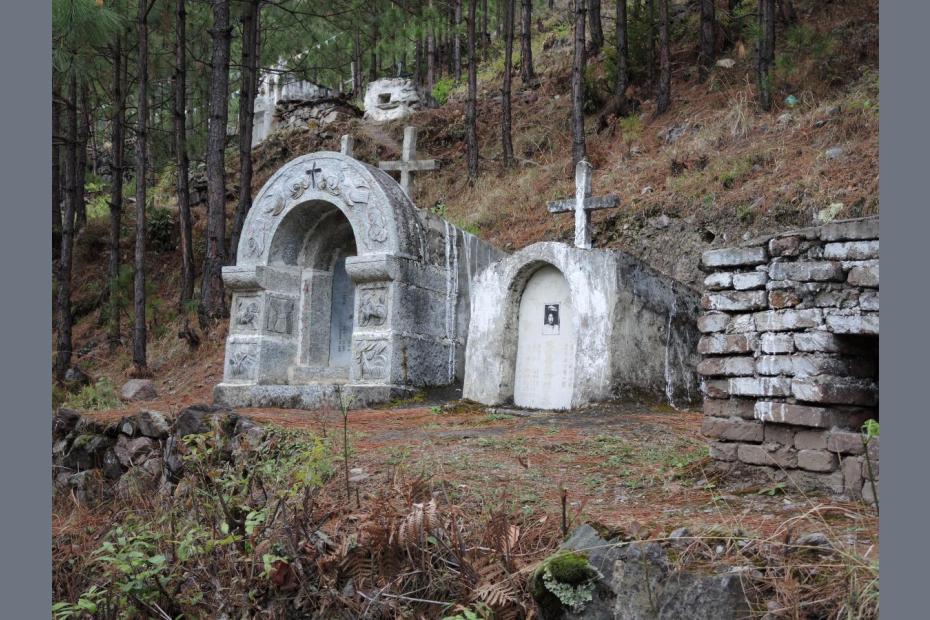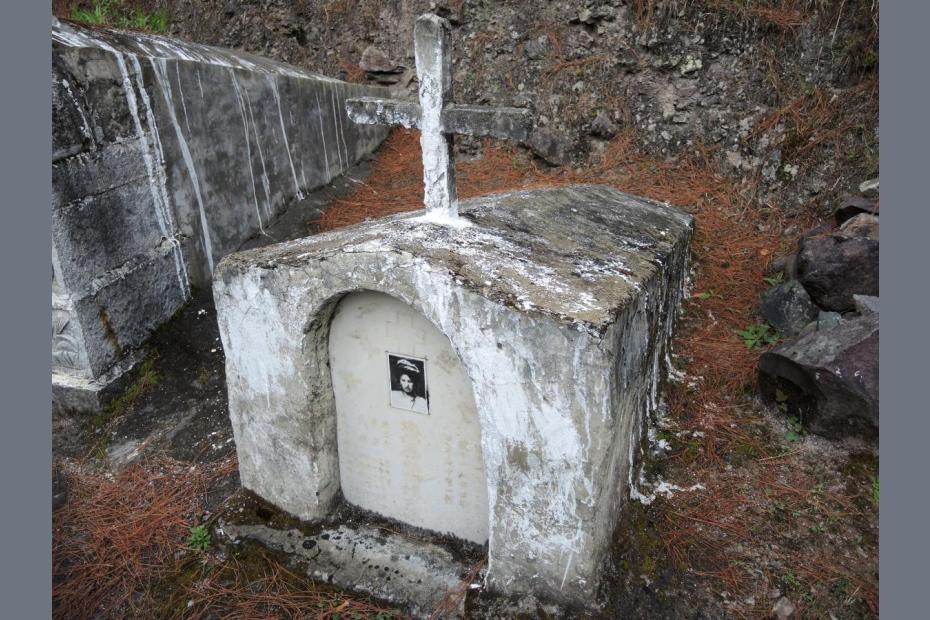In pre-revolutionary China, funeral customs and annual veneration of ancestors were considered such a primary social obligation that some Catholic missionaries’ attempts to proscribe the rituals for Christians was the most significant barrier to the spread of Christianity, and actually led to the suppression of Catholicism in the 18th century.
In his 1990s account of Catholic life in the rural Hebei province, Richard Madsen describes Chinese Catholic funeral rites as follows:
“Even the extremely indifferent participate in the one ritual that distinguishes them from all non-Catholics — Catholic funerals. Virtually all rural Catholics bury their dead in a way that is similar to yet distinct from that of non-Catholic peasants. Like those of the Big Teaching [Chinese “folk” religion], Catholic funerals are elaborate, day-long affairs, involving enclosure of the body in a large wooden casket, a banquet for extended family, and a long procession of relatives wearing white burlap mourning garments and arrayed in order of their blood relationship; the procession to the grave site is accompanied by shrill music from traditional wind instruments and the wailing of professional mourners. If a priest is available, he attends the funeral and leads its prayers. But like non-Catholic rural funerals, the event is organized mainly by the deceased’s family.
“What distinguishes God Teaching [Catholic] from Big Teaching [Chinese “folk”] funeral rituals is that the family members do not kowtow to the casket, do not burn incense sticks and mock paper money, and do not set out offerings of food at the grave site. These are the rituals of “ancestor worship” that were the objects of the Rites Controversy; they were permitted by Jesuit missionaries in the 17th century but proscribed in the early 18th century by Pope Clement XI. Instead of performing these forbidden rites, Catholic peasants sprinkle holy water on the casket and say prayers for the dead. On the burial mounds or tombstones, instead of the little platform on which non-Catholics place offerings of food, there is often a simple cross.
“Even those who were born into a Catholic family but are now skeptical of all Catholic doctrines, never go to church, and never pray, will give a Catholic funeral to their parents. The alternative to a Catholic funeral is not a Big Teaching funeral but a purely secular one. During the Cultural Revolution, China’s peasants were forced to have secular memorial services, but they resented it, and as soon as restrictions were lifted in the late 1970s, they resumed their traditional rituals. Today, Communist Party members are theoretically supposed to receive a secular, a-religious funeral, but even they usually do not. Rural Chinese funerals symbolize the bonds of kinship that are central to rural life: they connect families to preceding generations and offer hope to generations yet to come. For a peasant (Catholic or non-Catholic) to be bereft of such connections is to be not only lonely but vulnerable, cut off from the primary claims to loyalty necessary to carry on cooperative enterprises and to secure protection against hostile strangers. When Catholics die, the family has to symbolize this sense of connection in a ritual language common to almost all the relatives and common to the ancestors who recently preceded them. The only such language is the Catholic variant of folk death ritual.”1
In Yunnan, the Catholics of Cizhong and Cigu village indicated that they do not participate in Qing Ming graveside tomb-sweeping rituals, but rather wait until All Souls’ Day to honor ancestors by praying at their graves. Indeed, on Easter morning in 2015, on the day that coincided with the Qing Ming festival, only one family could be seen at the lower end of the cemetery making traditional folk-offerings to their ancestors. The residents of these areas, primarily “minority peoples,” mostly ethnic Tibetans, once had their own burial traditions, notably the sky burial – the custom of leaving a body in a charnel ground so that it can be devoured by vultures. This tradition, once forbidden by the Chinese, is said to be rare now, at least in the Lancang area.
- 1Richard Madsen, China’s Catholics: Tragedy and Hope in an Emerging Civil Society (Berkeley: University of California, 1998), 54-55.
